How Safe is the DRINKING WATER in Mangaluru?
How Safe is the DRINKING WATER in Mangaluru?
Mangalore Today News Network
Mangaluru, March 1, 2017: The Supreme Court in one of its past judgements had reiterated that ‘the right to access to clean drinking water is fundamental to life and there is a duty on the state under Article 21 to provide clean drinking water to its citizens but also to protect water sources from pollution and encroachment.’
The right to water is not enshrined in the Indian Constitution as an explicit Fundamental Right but this has been made possible because of a liberal and activist interpretation of the fundamental right to life by the Supreme Court as well as the High Courts of the country in series of cases before them.
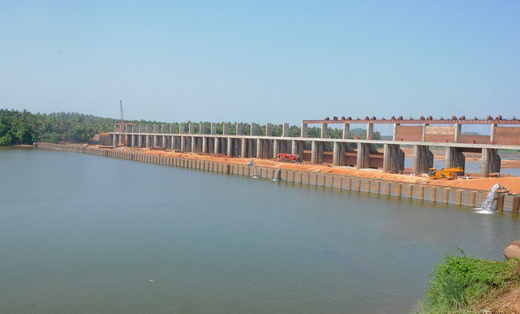
So, are we the citizens of the would-be Smart City Mangaluru, the so called second fastest growing city of the state, getting safe and clean drinking water? "Of course, Yes," says the first citizen K Harinath. "The Mangaluru City Corporation takes all necessary steps to ensure that water is purified at different stages before it reaches the people," he asserts.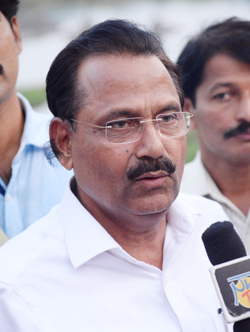 But, BJP leader and former environment minister J Krishna Palemar is not ready to accept this. Also a former MLA from Mangaluru North, Palemar literally threw a bombshell targeted right at the heart of the Mangaluru City Corporation recently when he raised the issue of ’Water’ which MCC supplies to the city of Mangaluru from Thumbay dam. Palemar raised serious concerns about the quality of water and even produced laboratory test reports to substantiate his claim and said that the drinking water supplied by the Mangaluru City Corporation (MCC) was not potable in most of the wards and was contaminated with deadly faecal Coliform. "MCC is supplying poison to Mangalureans in the form of contaminated water," Palemar had thundered.
But, BJP leader and former environment minister J Krishna Palemar is not ready to accept this. Also a former MLA from Mangaluru North, Palemar literally threw a bombshell targeted right at the heart of the Mangaluru City Corporation recently when he raised the issue of ’Water’ which MCC supplies to the city of Mangaluru from Thumbay dam. Palemar raised serious concerns about the quality of water and even produced laboratory test reports to substantiate his claim and said that the drinking water supplied by the Mangaluru City Corporation (MCC) was not potable in most of the wards and was contaminated with deadly faecal Coliform. "MCC is supplying poison to Mangalureans in the form of contaminated water," Palemar had thundered.
Palemar’s allegation justified by lab reports have since then given sleepless nights to the city fathers who took almost two weeks to come up with a clarification that water samples of 98 % of the city was fit for consumption and corrective measures have been taken to redress the Coliform content found in 2 % of the samples.
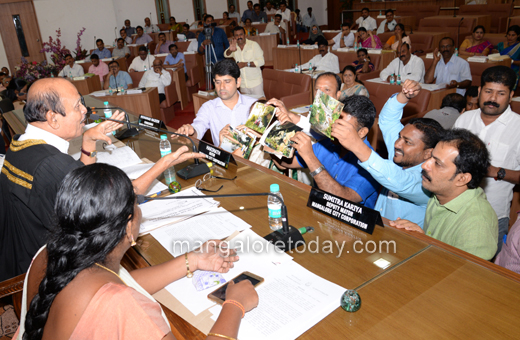
But, this has not been able to convince Palemar who stuck to his earlier stand that the MCC was supplying contaminated water. He even went one step ahead, visited Bantwal, came up with video proof to show how sewage water is directly let into river Netravathi at several places there. So far, the MCC has been silent with regard to this allegation. This time, Palemar says, he has solid proof in his hands and is awaiting the MCC response.
A quick recap:
The ’Water War’ had begun on January 3 when Palemar produced before the Press, the lab analysis report by Mangalore Biotech Laboratory, the first lab with National Accreditation Board for Testing and Calibration Laboratories (NABL) accreditation in the district which revealed the presence of high total coliforms and faecal coliforms in water samples collected from Katipalla Masjid, Bondel, Chilimbi, Krishnapura 7th Block and Krishnapura Water Tank. Palemar said that he had collected water samples from 27 areas in the city and obtained bacterial microbiology test from the lab. His suspicion was that the sewage pipeline might be a reason for water contamination.
Almost ten days later, on January 14, Mayor K Harinath along with Mangaluru South MLA JR Lobo convened a press meet to rebut the charges of Krishna Palemar that the civic body has been supplying contaminated drinking water to many wards in the city. The Mayor claimed that laboratory tests showed that 98% of the water supplied by the corporation is potable and free from contamination.
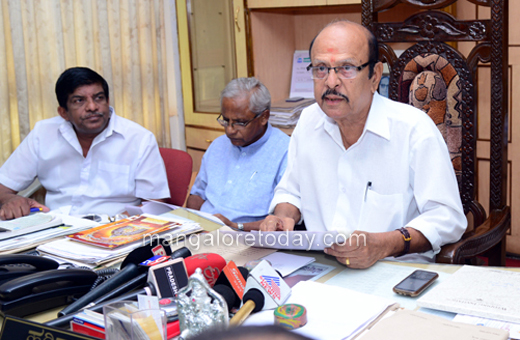
"The city corporation had collected water samples from 68 places and sent them for testing at Fisheries College laboratory and district surveillance unit laboratory in Mangaluru. The reports of 28 samples have arrived. The presence of coliform bacteria was found in 2% of the samples and the issue has been sorted out," the Mayor said.
As per the Mayor’s statement the Coliform bacteria had been found in water samples collected from Sunkadakatte, Krishnapura Vishwanatha temple area, Katipalla-Krishnapura Block II Masjid area, Krishnapura VII Block area, Padupadavu and Vadiraja Nagara in Alake.
The Mayor also cited reason for the contamination. The reason was on expected lines. "Sewage water had got mixed with drinking water as the pipelines of both the water supply and underground sewage network got damaged simultaneously while earth-movers dug up earth for laying UGD network in these areas," the Mayor had explained. He even informed that the damaged pipelines have been repaired and clean water was being supplied to the residents.
Meanwhile, JR Lobo, MLA of Mangaluru South reacted sharply against Palemar for going to the Press rather than bringing the matter to the notice of the MCC. "Palemar was unnecessarily sparking fear in the minds of Mangalureans by making baseless statements," said Lobo.
But, Palemar has asserted that he was not interested in politicising the issue but had raised the matter only in the interest of public welfare."No political motives are involved in my allegation on the contamination of drinking water. I am voicing my protest in public welfare,”said Palemar.
On the other hand, Mangaluru Mayor Harinath has been quite vocal when he said "Adequate precautions have been taken from source point to the supply point besides using a modern filtration system. The laboratory at Thumbay filtration unit monitors filtration of water and chlorination. Further chlorination is being done at Bendorewell, Panambur and Thumbe water filtration units."
The reply has not satisfied Palemar. "Chlorinating will not rid the water of its impurities. Use of excess chlorine in potable water too has its own side effects,,” he said. Meanwhile, he has shot another allegation that MCC has not been regularly conducting water quality tests, while tests were done in all wards during the BJP rule."Tests conducted then were negative for contamination. MCC under Congress rule had failed in its duty," he said.
Mayor Harinath has duly refuted this and clarified that MCC collects water samples once in every two to three months for test. "If citizens feel that the water is contaminated they can call the MCC helpline 0824-2220344/306/303 so that immediate arrangements could be made for collection of water sample for necessary lab tests," he says.
Even Mangaluru City South MLA JR Lobo reiterates that MCC does test the quality of water at regular intervals and that it was done again after Palemar’s allegation. "We have tested the water samples in the areas pointed out by Palemar and only 2% of samples showed coliform,’’ he adds.
If Palemar had stated that the water collected from Government Hospital in Surathkal was contaminated with coliform bacteria, especially faecal coliform, the Mayor has said that the MCC does not supply water to the Government Hospital in Surathkal and that has its own source of water.
MCC supplies 36 lakh gallons of water from Thumbay vented dam to Mangaluru city in two 18 MGD pipelines, the mayor said and added that the water is purified at various stages before it reaches the houses. "The MCC takes utmost care to ensure that water is purified and chlorinated before its supply," reiterates Harinath.
But, nothing could convince Palemar who said "The residents of the city have the right to get clean water. Therefore, we will carry on the fight for it till the city corporation supplies clean water to the people of Mangaluru," he says.
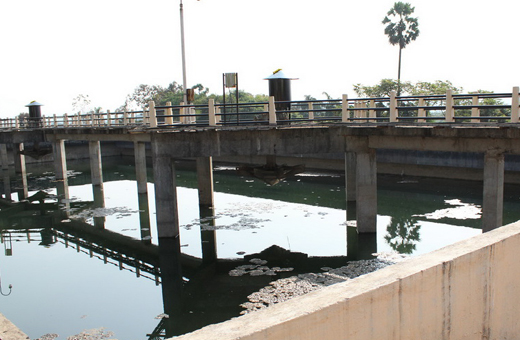
STP at Jeppinamogaru
Given the situation in Mangaluru with its horrific open drains, ruptured pipelines, sewage water flowing in open drains producing unbearable stench and turning into breeding ground for mosquitoes, pipelines caught in slush and debris, illegal tapping of water etc etc, it is but natural for the water to get contaminated as even a small rupture is enough to do the damage. Meanwhile, there are also allegations that the STPs at Jeppinamogaru, Bajal and Surathkal are not functioning properly.
The issue of ‘contaminated’ water even rocked the Mangaluru City Corporation meeting recently when BJP corporator Sudhir Shetty accused the Congress of not taking seriously the allegations made by Palemar that water supplied to many parts of the city was contaminated. Mayor Harinath was however quick to dub the allegations as a mere “election gimmick.” “If at all there was truth in Palemar’s claim, there would have been a rise in the number of people falling sick in the city,” he said.
Ultimately, yielding to pressure, the Mayor has agreed to take a delegation of Corporators to have a first hand account of the problem.
As the issue rages on, there is no doubt that people are caught between weak regulation and low awareness. The helplessness is multiplied by the fact that even if one knows that water was unsafe, there is very little a citizen can do about it apart from complaining. Inadequate sanitation facilities, poor sewage management and a near absence of waste water policy framework are primary reasons responsible for the contamination of water.
"Every government or local administration should give foremost importance to provide safe drinking water even at the cost of other development programmes. Nothing should stand in its way whether it is lack of funds or other infrastructure, Ways and means have to be found out at all costs with utmost expediency instead of restricting action to mere lip service," an expert has rightly pointed out.
With the city of Mangaluru having nearly 90,000 tap water connections, the City Corporation has to swing into action and ensure quality water is supplied to the citizens and give a reassurance to them in this regard.
The water crisis of 2016 summer is unforgettable, with another summer approaching, this time the people are worried more about the quality of water rather than its quantity.
Despite MCC’s assurance, Mangalureans are forced to pause before they sip water everytime. "Is the water safe?" The question continues to haunt them.
The Dangerous Coliform 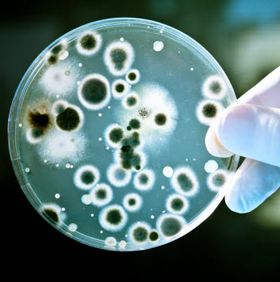 Coliforms are a broad class of bacteria found in our environment, including the faeces of man and other warm-blooded animals. The presence of coliform bacteria in drinking water may indicate a possible presence of harmful, disease-causing organisms. Drinking water must be free of disease-causing organisms called pathogens. Pathogens can be viruses, protozoa or bacteria. Coliform bacteria are commonly found in soil, on vegetation, and in surface waters. They also live in the intestines of warm-blooded animals and humans. Some coliform bacteria strains can survive in soil and water for long periods of time. Coliform bacteria will not likely cause illness in most people; however, because coliform bacteria are most commonly associated with sewage or surface waters, the presence of coliform bacteria in drinking water indicates that other disease-causing organisms (pathogens) may be present in the water source or its distribution system.
Coliforms are a broad class of bacteria found in our environment, including the faeces of man and other warm-blooded animals. The presence of coliform bacteria in drinking water may indicate a possible presence of harmful, disease-causing organisms. Drinking water must be free of disease-causing organisms called pathogens. Pathogens can be viruses, protozoa or bacteria. Coliform bacteria are commonly found in soil, on vegetation, and in surface waters. They also live in the intestines of warm-blooded animals and humans. Some coliform bacteria strains can survive in soil and water for long periods of time. Coliform bacteria will not likely cause illness in most people; however, because coliform bacteria are most commonly associated with sewage or surface waters, the presence of coliform bacteria in drinking water indicates that other disease-causing organisms (pathogens) may be present in the water source or its distribution system.
There are three different groups of coliform bacteria, and each has a different level of health risk:
1. Total coliform bacteria are commonly found in the environment and are generally harmless. If only total coliform bacteria are detected in drinking water, the source is probably environmental, and fecal contamination is not likely. If environmental contamination can enter the system, however, that suggests there may be a way for pathogens to enter the system. Therefore it is important to determine the source and resolve the problem.
2. Fecal coliform bacteria are a sub-group of the total coliform group. They are found in great quantities in the faeces of people and animals. The presence of fecal coliform in a drinking water sample often indicates recent fecal contamination -- meaning that there is a greater risk that pathogens are present than if only total coliform bacteria are detected.
E. coli is a sub-group of the fecal coliform group. Most E. coli are harmless and are also found in great quantities in the faeces of people and warm-blooded animals. Some strains, however, may cause illness. Some of these common waterborne illness symptoms include diarrhea, vomiting, headache, and cramps (acute gastrointestinal illness).
Open drains
Open drainages in Mangaluru have been a cause of perennial threat. To cite a few are the open drains near Bejai Road, Alake and the one at Attavar. The unbearable stench emanating from these drains has made life difficult for residents of the vicinity. For instance residents of Attavar have been complaining since long of the inconveniences caused due to the open drains which are stinking and are all likely to result in grave illnesses. The many horrifying stagnant gutters of a wide range are a source of misery for Mangalureans.
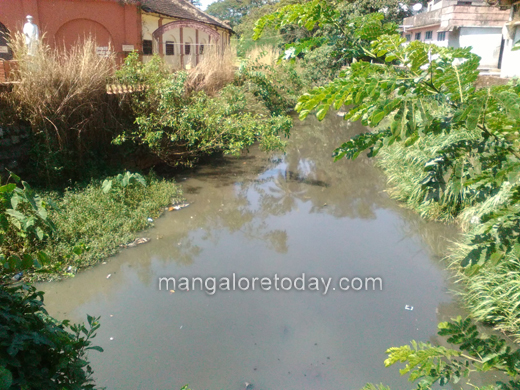
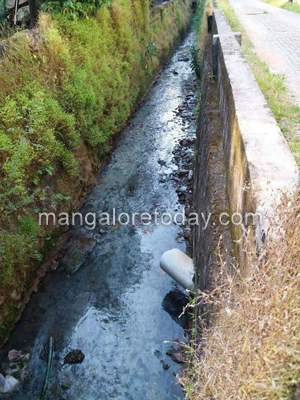
These gutters decades earlier used to carry storm water to the sea and keep this sea side city free from flooding during rains and thus were of less harm. However, with the poor drainage in this growing city and the proliferation of population and high rises and flats galore, these do not have any proper underground drainage the foul smelling contaminated water in these chocked gutters/drains and pollutes the whole city atmosphere. Many unauthorized main and sub drains can be seen in various prominent parts of the city from Bolar to Baikampady. No steps are taken to spray disinfectants or suitably cover exposed surfaces in residential populated localities. This is a modern day torture of citizens by the ’rulers,’ points out a senior citizen.
Netravathi - what’s ailing you?
A Reality Check
Netravathi - the name is closely bonded with Dakshina Kannada district. She is an inseparable part of the lives of the people of the district. She is the lifeline of Dakshina Kannada. Originating in the Western Ghats, she flows majestically 90 kms towards the West irrigating over 3.5 lakh hectares of farm lands and providing drinking water to lakhs, and joins the Arabian Sea near Mangaluru. She provides a spectacular view during the monsoons when she is in her full splendour. She is worshipped and revered by the people of Dakshina Kannada.
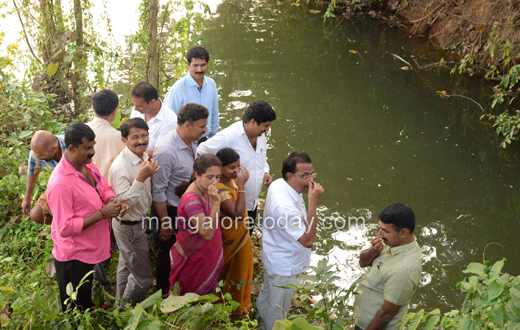
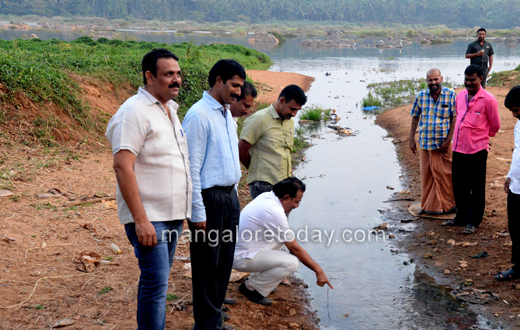
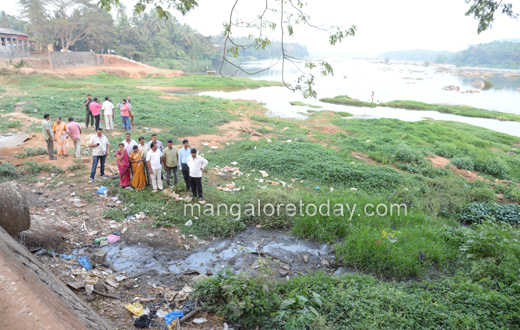
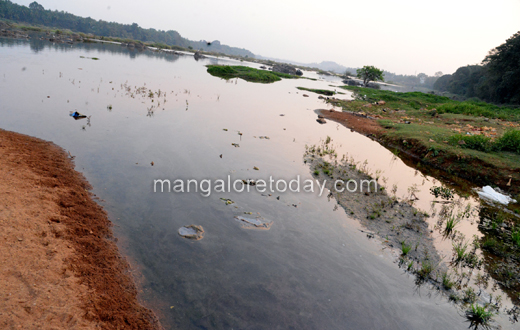
Yes, we the people of Mangaluru have a close bonding with River Netravathi. Numerous agitations and protests have been organised in the recent past to Save River Netravathi from disastrous consequences of the implemen-tation of Yettinahole Project which many fear would render Netravathi barren.
But have Mangalureans ever given a thought of how Netravathi river is polluted due to the mindless acts of a few ? Has the Mangaluru City Corporation which asserts that it has been providing clean drinking water to the people of Mangaluru ever tried to visit Bantwal and have a look at the way the river is blatantly polluted ?
Sign boards put up by the administration on the river banks advising people not to bathe in the river, wash utensils and clothes or bathe livestock have been of little help as the advice has been easily given a go by, in turn taking its toll on Netravathi. Many labourers residing along the river banks in utter disregard of the advice do all daily chores on the riverside.
Worst of all, the sewage water from many places in Bantwal is blatantly released to the river. After all who is to be blamed for this ?
Though a Sewage Treatment Plant was proposed in Bantwal when the UGD project was initiated the former never took off for want of land. The result in the open letting of sewage into the lifeline of the district.
A reality check by former minister Krishna Palemar who visited Bantwal along with several BJP leaders including Deputy Mayor Sumitra Kariya and local party leader Rajesh Naik presented grim facts. Several stretches along the banks were found littered. " Untreated effluents from drains and an abattoir on Panemangaluru -Bantwal road are directly released into the waters of River Netravati at 18 places in the Bantwal Town Municipal Council limits in the upstream of the Thumbe dam. The waste water mixes with the water in the dam and the same is supplied for drinking,”said Palemar.
"Water samples drawn from various places upstream from Thumbe vented dam showed high levels of coliforms and faecal coliforms," Palemar said and also presented a laboratory report which revealed that the total amount of coliform is 1600 units per 100ml while fecal coliform is 542 units per 100 ml. The samples have been tested at an NABL accredited laboratory, Palemar informs.
He has also questioned Bantwal MLA and State Minister holding Environment and Forest Portfolio Ramanatha Rai for failure to have an STP in his constituency.
Elected representatives in MCC must quit if they are unable to redress such a grave issue.”This is a serious issue that would affect health of thousands. The flow of untreated sewage into the river has to be stopped,” he demands. The fight will continue until Mangalureans are entitled to clean water, reiterates Palemar.
At the Bantwal TMC meet held recently, Councillors too raised serious concerns over contamination of Netravathi due to release of sewage water from houses, hotels and commercial complexes to the river. Poultry and animal wastes too are blatantly dumped into the river right from the highway, complained the members. The TMC Chief Officer has assured necessary action by issuing notices to those releasing effluents into the river.
In another case of mindless pollution of the river, concrete mixers, JCB and other machinery are being washed right on the banks of the river Netravathi at Uppinangady where an embankment is being constructed to Netravathi.
What an irony that the lifeline of the district who is revered and worshipped is suffering in silence at the hands of her own people?
With growing urbanisation and industrialisation almost all cities of India face the growing challenge of providing clean and safe drinking water to all citizens. The fight against pollution must also become a people’s movement, as the administrations have been unable to control water pollution. It is underlined by the need for a holistic management of river pollution that takes into consideration urban planning for sewage management. The CSE has been advocating decentralised wastewater treatment options that can be undertaken by institutions and individuals. Water quality is a serious concern. It is time the administration recognises the enormity of this problem and start taking the necessary actions.
Messy UGD Project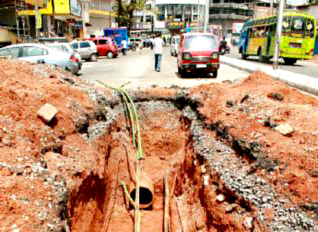 The Under Ground Drainage project of Mangaluru taken up by the Karnataka Urban Infrastructure Development and Finance Corporation (KUIDFC) with ADB aid a decade ago, is still incomplete with missing links in the network in several places.
The Under Ground Drainage project of Mangaluru taken up by the Karnataka Urban Infrastructure Development and Finance Corporation (KUIDFC) with ADB aid a decade ago, is still incomplete with missing links in the network in several places.
Of the 360-km long network laid with an estimated cost of Rs. 218 crore in the city, 90-km long underground pipelines from Hosabettu, Kulai, Katipalla and Surathkal areas were connected to the 16.5 million litres-a-day (MLD) capacity sewage treatment plant at Surathkal. There were complaints that some manholes in Suratkal area had collapsed as they were set up using laterite stones instead of concrete mixture. Pipelines laid underground were also said to be uneven. This information is possibly suffice to reveal how even the MCC lab tests had revealed faecal colifom content in water samples from Mangaluru North area to which Suratkal belongs. Referring to this problem, MLA Lobo says "A sum of Rs 55 crore would be utilised for rectifying the missing links of the sewer lines, repair of old UGD systems, and construction of approach roads in Surathkal area. When drinking water lines and sewage lines run parallel to each other, it is evident that any leakage in the sewage line or the water pipeline will lead to contamination throughout the channel.
In fact there has been a demand since long for the missing links in the sewer lines implemented under the first phase of the ADB-funded project to be rectified before going ahead for the second phase of the project. According to a joint survey report by the Karnataka Urban Development and Coastal Environment Management Plan (KUDCEMP) and the MCC, the missing link was due to issues related to availability of land, and rock formation in sites coming in the way of linking pipelines. It was also stated a few months ago that funds under the AMRUT scheme will be used to replace the old network with new ones.
It is true that the UGD project taken up by the KUDCEMP with aid from the Asian Development Bank (ADB) was a boon.
But in many places manholes are well above the houses questioning the rationale of having UGG. In many cases, houses on the lower level fail to derive benefit since sewer lines run on principles of gravity and cannot go below a certain level. In some areas, the sewer line should be taken a few meters below the existing lines, which is not feasible in many cases. In such an event, the houses will have to connect their sewer line to another manhole which could require alteration of the toilet design. As a last option, the household has to inevitably go in for the traditional leach pit.
In December 2016, MLA of Mangaluru North BA Moidin Bava had informed that a sum of Rs 218 crores and Rs 195 crores would be respectively sanctioned for drinking water and UGD facility in MCC limits by revising the earlier grant of Rs 160 crores and Rs 120 crores respectively. The sum allotted towards UGD would be utilised for effective under ground drainage system and also to undertake survey in places where the system has not been provided, the MLA had stated. The second phase of UGD network is expected to get Rs 400 crore loan from ADB.
- New Synthetic Drugs Trapping Youth
- Mood Modifying Chips - Future of Drug Use
- Ramping up Indo-Bangla border security
- IITM- A premier educational Institution in a forest. What can we learn?
- Former PM, Manmohan Singh: Notable laws passed under his tenure
- Hashish on Ratnagiri Seashore
- The Poor cry out to Us: Do we respond?
- Clandestine Meth Labs Sprouting Across India
- Hydro ganja from Bangkok latest craze among youth in India
- "Memories to Treasure" Dr.Michael Lobo’s new book
- Dominance of Private Universities: Will it make education inaccessible to underprivileged students?
- Monti Phest: A rich heritage of South Canara
- When jails become drug dens
- Kashmir Bhavan in Bengaluru: A must visit place
- "MAI and I" Book of Angelic Emotions
- Draupadi Murmu - The New ’President of India’
- Anthony Ashram in the city grows a classic museum
- First College of Fisheries in India - A Golden Jubilarian
- Flushing Meadows - A Vintage Mansion
- The Colonel�s Bequest
- A Mangalorean PM and his RBI Governor Brother: The Extraordinary story of the Benegal Brothers
- There is no higher religion than Truth: Theosophical Society
- L�affaire - Ashu & Yiju of Mangalore
- Mangalore in Kowloon
- 1568 to 2018 AD: 450 years of Christianity in Mangaluru
- Vice President elect Naidu moves on from nadir to zenith, the phenomenal journey
- Embracing the Outdoors: How Heated Jackets Are Revolutionizing Cold Weather Activities
- Efficient and Sustainable Packaging Solutions with FIBCs
- The Hybrid Kilt Revolution | Where Tradition Gets Trendy
- Affordable Elegance | Embrace Style on a Budget with Cheap Kilts
- Unleashing Style and Functionality | Exploring Tactical Kilts
- Mangalore’s Heroic Lady marks 105th Birthday
- Santa the Christmas spirit
- Geriatric care: Mangalore strikes a fine balance
- The Don Who Made Two Empires to Clash
- CHITRAPUR SARASWATS - A Great Kanara Community
- Our new President Ram Nath Kovind’s significant journey to Rashtrapathi Bhavan
- Marriages made in heaven, big fat weddings made in India
- Eid insight - The giver of glad tidings
- CITY INFORMATION
- TRAVEL
- TOURIST INFORMATION
- HEALTH CARE
- MISCELLANEOUS



 Write Comment
Write Comment E-Mail To a Friend
E-Mail To a Friend Facebook
Facebook Twitter
Twitter  Print
Print 


